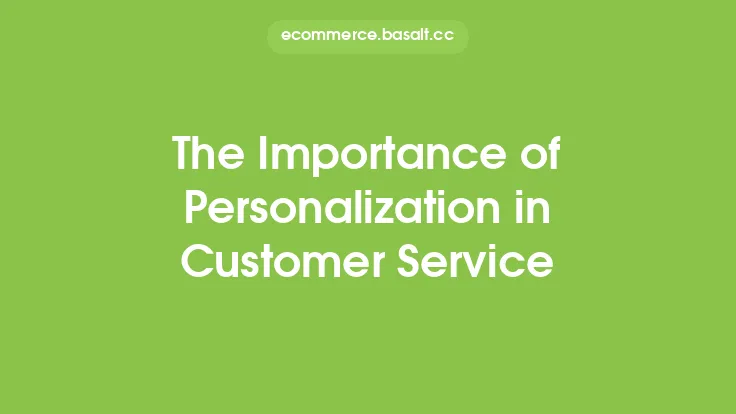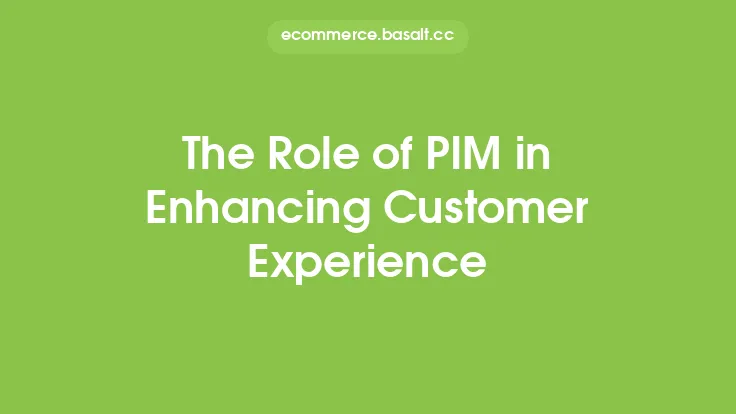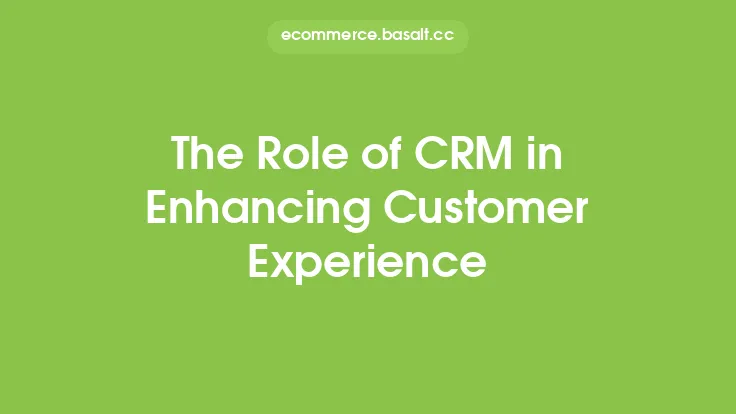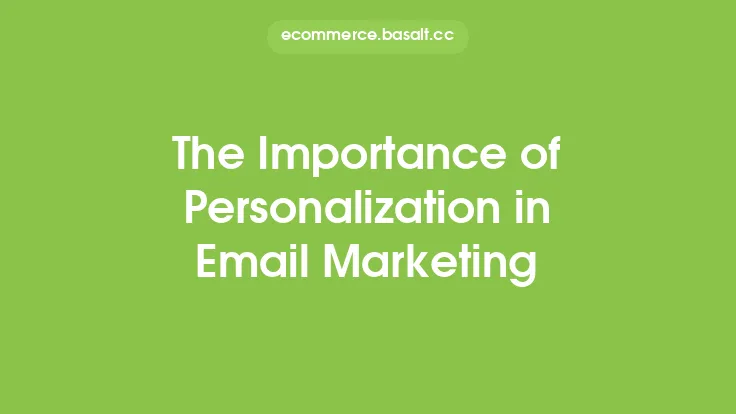In today's competitive e-commerce landscape, providing a personalized customer experience has become a crucial differentiator for businesses. With the rise of digital technologies, customers have come to expect a tailored experience that caters to their individual needs and preferences. Personalization is no longer a luxury, but a necessity for e-commerce companies looking to build strong relationships with their customers and drive long-term growth.
What is Personalization in Customer Experience?
Personalization in customer experience refers to the practice of using data and analytics to create a tailored experience for each customer. This can include product recommendations, content, offers, and interactions that are relevant to the individual customer's interests, behaviors, and preferences. Personalization can be applied across various touchpoints, including websites, mobile apps, email, social media, and customer service interactions. The goal of personalization is to create a sense of familiarity and relevance, making customers feel valued and understood.
Benefits of Personalization in Customer Experience
The benefits of personalization in customer experience are numerous. Some of the key advantages include:
- Increased customer engagement: Personalization helps to create a sense of connection with customers, leading to increased engagement and loyalty.
- Improved conversion rates: By presenting customers with relevant products and offers, personalization can drive conversions and revenue growth.
- Enhanced customer satisfaction: Personalization helps to create a positive experience, leading to increased customer satisfaction and reduced churn.
- Competitive differentiation: In a crowded market, personalization can be a key differentiator, setting a business apart from its competitors.
- Increased customer lifetime value: By building strong relationships with customers, personalization can lead to increased customer lifetime value and long-term growth.
Types of Personalization in Customer Experience
There are several types of personalization in customer experience, including:
- Product recommendations: Using data and analytics to recommend products that are relevant to the customer's interests and behaviors.
- Content personalization: Tailoring content, such as blog posts, videos, and social media posts, to the customer's interests and preferences.
- Offer personalization: Presenting customers with personalized offers, such as discounts, promotions, and loyalty rewards.
- Interaction personalization: Tailoring interactions, such as customer service and support, to the customer's individual needs and preferences.
- Channel personalization: Using data and analytics to determine the most effective channel for interacting with each customer, such as email, social media, or mobile push notifications.
How to Implement Personalization in Customer Experience
Implementing personalization in customer experience requires a combination of data, analytics, and technology. Some of the key steps include:
- Collecting and analyzing customer data: Gathering data on customer behaviors, preferences, and interests, and using analytics to gain insights and identify patterns.
- Using personalization technologies: Leveraging technologies, such as recommendation engines, content management systems, and customer relationship management (CRM) software, to deliver personalized experiences.
- Developing a personalization strategy: Creating a clear strategy for personalization, including goals, objectives, and key performance indicators (KPIs).
- Testing and optimizing: Continuously testing and optimizing personalization efforts to ensure they are effective and aligned with customer needs and preferences.
Challenges and Limitations of Personalization in Customer Experience
While personalization in customer experience offers many benefits, there are also challenges and limitations to consider. Some of the key challenges include:
- Data quality and accuracy: Ensuring that customer data is accurate, complete, and up-to-date is crucial for effective personalization.
- Customer privacy and security: Balancing personalization with customer privacy and security concerns is essential.
- Scalability and complexity: Personalization can be complex and difficult to scale, particularly for large and complex businesses.
- Measuring and evaluating effectiveness: Measuring and evaluating the effectiveness of personalization efforts can be challenging, particularly in terms of attributing revenue and growth to personalization initiatives.
Best Practices for Personalization in Customer Experience
To get the most out of personalization in customer experience, businesses should follow best practices, such as:
- Starting small and scaling up: Beginning with small, targeted personalization efforts and scaling up over time.
- Focusing on customer needs and preferences: Prioritizing customer needs and preferences when developing personalization strategies.
- Using data and analytics: Leveraging data and analytics to inform personalization efforts and measure effectiveness.
- Testing and optimizing: Continuously testing and optimizing personalization efforts to ensure they are effective and aligned with customer needs and preferences.
- Being transparent and customer-centric: Being transparent about personalization efforts and prioritizing customer needs and preferences above all else.
Future of Personalization in Customer Experience
The future of personalization in customer experience is exciting and rapidly evolving. Some of the key trends and developments to watch include:
- Artificial intelligence (AI) and machine learning (ML): Using AI and ML to deliver more sophisticated and effective personalization.
- Internet of Things (IoT): Leveraging IoT data and devices to deliver more personalized and contextual experiences.
- Augmented reality (AR) and virtual reality (VR): Using AR and VR to create immersive and personalized experiences.
- Customer data platforms (CDPs): Using CDPs to unify customer data and deliver more effective personalization.
- Ethics and regulation: Navigating the ethical and regulatory implications of personalization, including issues related to customer privacy and security.





